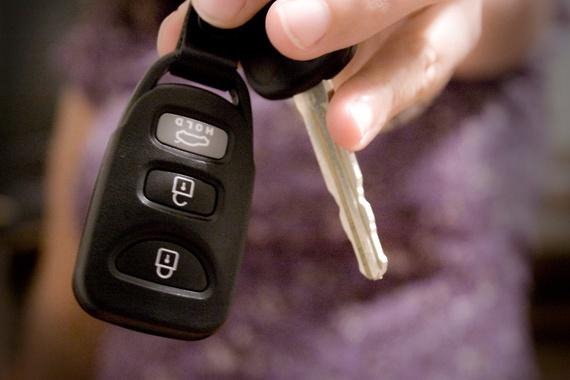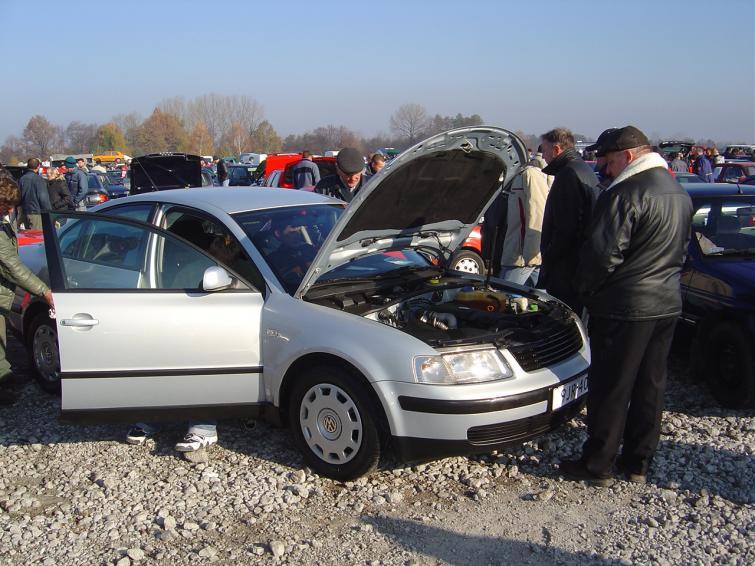
Cold and close to home, or how not to be deceived when buying a used car
 Although imports of used cars to Poland are unabated, and tens of thousands of ads can be found on the Internet, it is not easy to buy a good used car. What is worth remembering?
Although imports of used cars to Poland are unabated, and tens of thousands of ads can be found on the Internet, it is not easy to buy a good used car. What is worth remembering?
December 2016 was exceptional for the aftermarket. The Poles registered 91 used cars. Samar reports that this is the highest result since 427. It turns out that the cars were also record-breaking old. The Samara Institute calculated that in December last year, the average age of an imported passenger car reached 2004 years.
Among them you can find, of course, little-used cars. When prices are the criterion for buying, and they rule the market for the oldest cars, it is better not to count on it. The condition of many cars leaves much to be desired. “Unfortunately, age and high mileage can be seen in many imported cars. Most of them are suitable for overhaul, if not mechanical, then varnishing. Many cars that customers bring to us for pre-purchase inspection require significant financial outlays, and after a thorough inspection, the deal will not go through,” says Stanislav Plonka, an auto mechanic from Rzeszów.
We advise you to refrain from long trips
How not to be deceived? First of all, we advise you to look for a car close to home. - The content of the ads shows that most of the cars are in perfect condition. After 10 years, they have a mileage of 100-150 fifty thousand kilometers, native paint without scuffs and scratches, and the engine and suspension work flawlessly. Reports of previous timing belt, filter and oil changes are common. People who are tempted by such information often drive to the other end of Poland for a car. The spell dissipates on the spot, says Stanislav Plonka.
To avoid such situations, key questions should be asked to the dealer over the phone. If he claims that a ten-year-old car has a mileage of one hundred thousand kilometers, he must document this. The service book will be the basis for this only if it was carried out to the end. At the same time, it is customary to report a documented service history, and the last visit to the dealership was several years ago. Thus, the mileage cannot be accurately checked.
Doubts should also be caused by an impeccable varnish, devoid of any defects and scratches. This is not possible in a normal car. Minor damage occurs, among other things, as a result of sand and pebbles entering the front of the body or when washing the car, even with a soft, natural brush.
The seller, who is confident in the proposed car, will agree to measure the thickness of the paintwork during a telephone conversation and allow the car to be inspected at an authorized service station. If he is not cheating, he should also easily agree to an offer to reimburse the buyer for travel expenses if the car turns out to be varnished and the mileage is higher than declared. However, even such security does not guarantee the right purchase, so it is better to limit search trips to a radius of one hundred kilometers from the place of residence. Unless we are looking for a truly unique car.
Check glass numbering.
Used cars are best viewed by two people - the voice of reason is always useful. When inspecting the body, you should pay attention to the marking of the glasses, which should be one year or two adjacent years. The manufacturer mixes them, for example, when he assembles the car at the beginning of the year and has last year's windows in stock.
– The number indicating the year the glass was manufactured is usually placed below other symbols, such as the brand logo and the seal of approval. Yes, there are situations when the windshield needs to be replaced without impact, for example, because it was shattered by a stone while driving. But often there are collisions under the swap. Therefore, another designation or manufacturer should always be in doubt. Such a car should be examined very carefully and the seller should be asked for an explanation,” says Stanislav Plonka.
Read more: Repair of car headlights. What is it and how much does it cost?
Traces of varnishing should be mainly on the edges and inside the elements, as well as on protruding surfaces and plastic. If, for example, the door was varnished, then it is very likely that there will be beakers with varnish on it, and pollen and debris embedded in the varnish can be searched against the light on the coating. Very often, on the inside, you can see the place where the new varnish was cut off from the original with tape. Moreover, on a trouble-free machine, the wing bolts should not show any signs of loosening.
- Especially from the front, it is worth considering all the plastic elements, grilles, grilles, casings, headlights and casings of halogens. In a non-accident car, they shouldn't be damaged or loose, but if they're new, you might also suspect someone replaced them after the accident, Plonka says. Spotlights flooded from the inside should also be in doubt. In a non-accident vehicle, due to the temperature difference between inside and outside, the lenses may evaporate a little from the inside, but drawing water through them is a sign of leakage, which may indicate the past of the car.
When starting the engine, all the lights on the dashboard should not go out at the same time. If so, it could mean that the car was involved in a serious accident in which the airbags deployed. Few of the owners of damaged cars change the pillows for new ones. Instead, the damping circuit is connected to another circuit so the indicator lights turn off at the same time. It is also worth checking that the seat belts slide freely and are not damaged. If the belts are not working properly, this could be a sign of a past car accident.
Listen to the engine
During the test drive, do not turn on the radio, but listen to the engine and suspension. The engine should run smoothly and should not jerk when accelerating. At idle, the RPMs should be even. Choking and interruptions while driving can indicate many types of problems, including injection system failures, which are very common in modern cars and, unfortunately, expensive to repair. When stopping, it is worth adding gas and asking the person who also came to inspect the car to pay attention to the color of the exhaust gases. They must be transparent. Black color suggests, among other things, problems with the injection system, turbocharger or EGR valve. A bluish white color can be a sign of problems with the cylinder head or even oil burnout, which most often requires an engine overhaul. It is worth arranging a meeting at the seller's house and asking him not to start the engine earlier. The first few minutes of operation before the engine reaches operating temperature can reveal problems. Metallic knocking or puffs of smoke from the exhaust pipe can portend a road and a breakdown that is difficult to fix. The way it starts can tell a lot about the condition of the drive. This should happen a moment after turning the key - of course, without excessive vibrations or temporary work on three cylinders.
– A running engine must be free of leaks. It is best when it is dry and naturally dusty. If the seller washed it and polished it with silicone spray, he probably has something to hide. During a test drive, leaks are unlikely to appear, but if they were before washing, then you will probably see them in a few weeks, says the mechanic. Suspension knock when accelerating with the wheels turned out, most likely, the hinges are damaged, metal friction may indicate wear of the brake pads or discs. Broken stabilizer links will sound when driving on bumpy roads, and a car with worn shock absorbers will rock like a boat after crossing transverse bumps. A serviceable car should also not have slotted tires. The tread should be evenly worn across the entire width, and the car should not pull to either side while driving. Problems with setting convergence often arise due to irregularities.
Check what you are signing
According to lawyers, a used car should be thoroughly checked, because if it turns out to be defective, it will not be easy to return it to the seller. “First, the fraud imputed to the seller must be proven, and this is where the stairs usually begin. It all depends on how the contract of sale of the car looks like. If the buyer indicated in it that he does not mind the condition of the car, he may be in trouble because he saw what he was buying. Can we talk about hidden defects in this situation? says Ryszard Lubasz, a lawyer from Rzeszow.
A similar opinion is shared by the Commissioner for Consumer Protection at the Rzeszow City Hall. However, he says that it is not worth refusing to defend your rights. – When buying a car from a private person, we have a one-year warranty on it. The commissioner is also responsible for the goods for a year. In both cases, if we discover a defect, you can claim repair costs, compensation and even withdraw from the contract. But it is the buyer who must prove that he was misled, deceived, - adds the press secretary. She recommends always contacting professionals to assess the condition of your vehicle before purchasing a vehicle. Just in case, you should also print out an ad from the Internet, in which the seller states that the vehicle will be accident-free and trouble-free. It could be evidence in court. – However, you must carefully read the contract you sign. It is precisely its provisions that may subsequently be decisive for the course of the case in court, Lyubash warns.